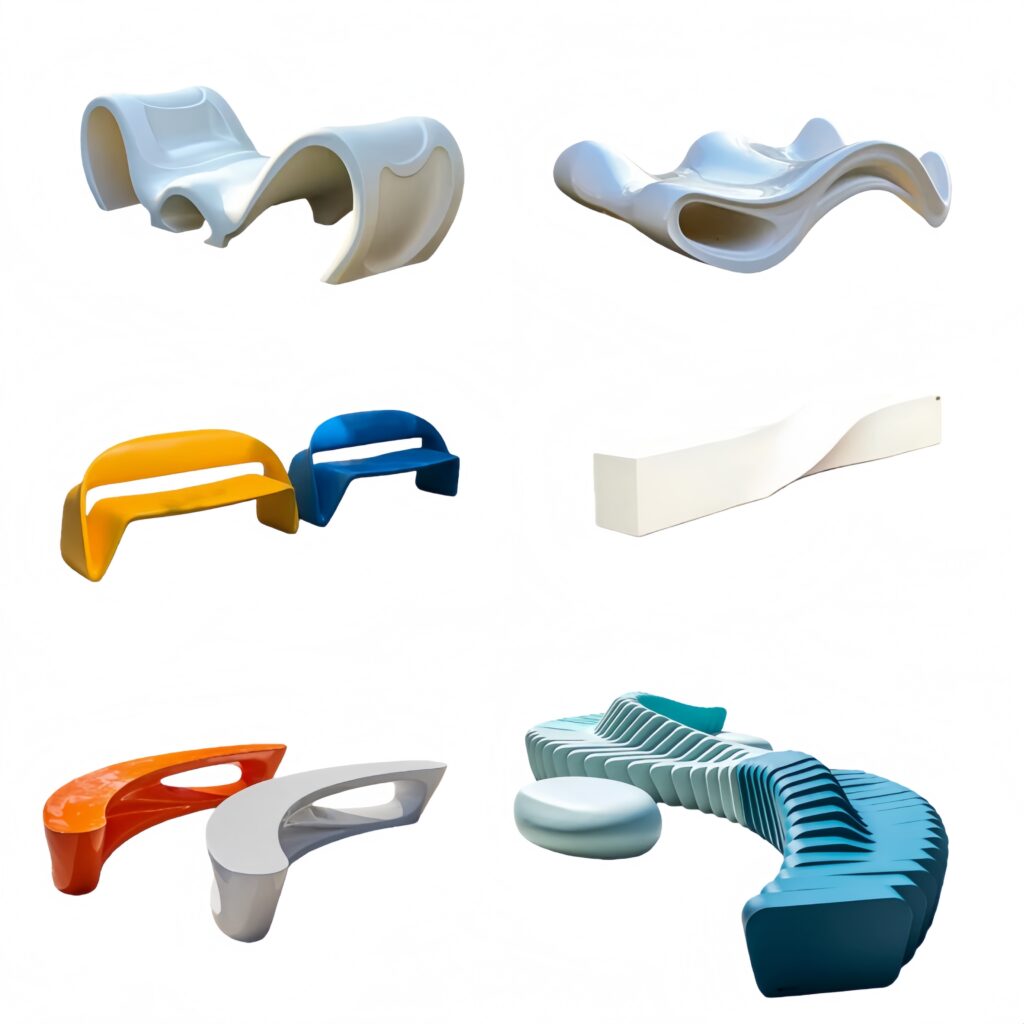Outdoor furniture is often exposed to challenging weather conditions and environmental stress. While wood and metal have traditionally been used, fiberglass outdoor benches are increasingly recognized for their superior performance and longevity. This article highlights five key reasons why fiberglass benches outlast traditional furniture materials, with integrated questions and answers to address common concerns.

1. Superior Durability Against Weather
1.1 Wood and Metal Weaknesses
– Wood can absorb moisture, leading to cracks and decay.
– Metal benches often rust when exposed to rain or coastal air.
1.2 Fiberglass Strength
– Fiberglass reinforced plastic (FRP) resists warping, cracking, and fading.
– Its durability makes it suitable for coastal regions, parks, and public spaces.
Q: Are fiberglass outdoor benches suitable for all climates?
A: Yes. They are resistant to rain, snow, UV rays, and high humidity, making them ideal for diverse environments.
2. Resistance to Corrosion and Decay
2.1 Traditional Material Issues
– Wood requires coatings to prevent mold or termites.
– Metals need constant painting to avoid corrosion.
2.2 Built-In Protection of Fiberglass
– FRP does not rust, rot, or decay.
– Long-term resistance ensures longer service life.
Q: How long do fiberglass outdoor benches typically last?
A: With proper care, they often last 15–20 years or more, significantly longer than wood or metal options.
3. Low Maintenance Requirements
3.1 Maintenance Burden of Traditional Furniture
– Wooden benches require sanding, sealing, and regular care.
– Metal benches need repainting and rust-proofing.
3.2 Easy Care of Fiberglass Benches
– Cleaning requires only mild soap and water.
– Reduced maintenance saves time and costs for municipalities and businesses.
Q: Do fiberglass benches require special maintenance?
A: No. Simple cleaning is sufficient—no sealing, staining, or repainting needed.
4. Eco-Friendly and Sustainable Material
4.1 Environmental Drawbacks of Traditional Materials
– Harvesting wood impacts forests.
– Metal production consumes significant energy.
4.2 Fiberglass as a Sustainable Choice
– Longer lifespan reduces waste and replacements.
– Can include recycled content in production.
Q: Are fiberglass outdoor benches environmentally friendly?
A: Yes. Fiberglass benches reduce waste by lasting longer and requiring fewer replacements. They can also incorporate recycled content, making them more sustainable.
5. Cost-Effectiveness Over the Long Term
5.1 Higher Initial Investment
– Fiberglass benches may be slightly more expensive upfront.
5.2 Long-Term Value
– Extended durability reduces replacement costs.
– Low maintenance cuts operational expenses.
Q: What types of public spaces use fiberglass benches?
A: They are commonly installed in:
– Municipal parks and gardens
– University campuses
– Residential communities
– Commercial and shopping areas
– Coastal walkways and waterfronts
Conclusion
Fiberglass outdoor benches provide unmatched advantages over traditional wood and metal furniture. With superior weather durability, corrosion resistance, minimal maintenance, eco-friendliness, and cost-effectiveness, fiberglass benches represent a future-proof solution for parks, schools, communities, and commercial areas.


